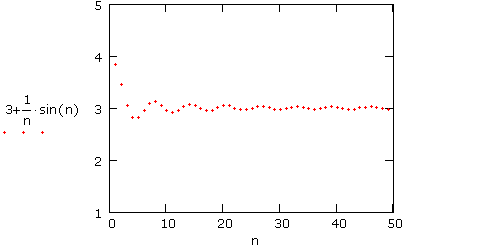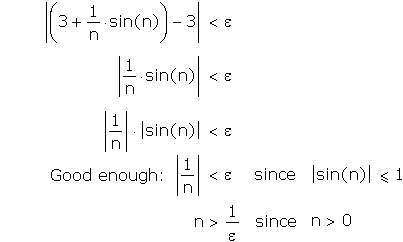Convergence & Divergence
The sequence an = 10–(.005)n converges to 0 because the distance between any term in the sequence and 0 is eventually as small as we wish (i.e., less than any e > 0). This is generally what we mean when we use the word "converge" to describe a sequence that eventually "settles down" to a particular value:
Definition: A sequence {an} converges to the value a if for any e > 0 there is an input N such that | an – a | < e whenever n > N .
When a sequence fails to converge we say that it diverges.
Consider another example: an = 3 + (1/n)sin(n) . A plot of the first 50 terms looks like this:

Although the terms gyrate up and down, they do seem to be "settling down" to a value of 3 . Does the sequence actually converge to 3 ?
To say so conclusively, we would have to be able show that, in the long-term, | an – 3 | < e for any e > 0 . Precisely, we would have to exhibit the N (dependent on e , of course) so that | an – 3 | < e when n > N .
This isn't difficult:

So: Every term in the sequence is within 1/10 of 3 once n > 10 , within 1/100 of 3 once n > 100 , etc. The sequence of values "settles down" to 3 , and we can even say after which point all further terms will be within a given distance.
Divergent sequences are just as common as convergent ones. Sequences diverge either because they are "all over the place", or else because they increase or decrease without limit:

 Explore sequences
Explore sequences



